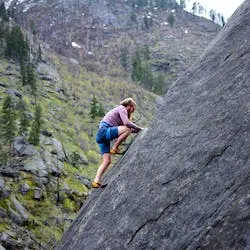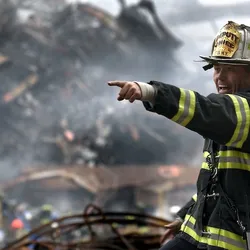
Level 1:
You should use safe ways to climb. There are different types of climbing such as bouldering, top-ropping, lead climbing, and ice climbing. Each type needs different ways to climb safely. You should know how to use safety equipment and follow safe rules.
Level 2:
Understanding and using safe climbing techniques is vital for any climber. Different types of climbing, including bouldering, top-roping, lead climbing, and ice climbing, require different safety measures. Familiarity with each climbing style’s safety equipment and procedures is paramount. Following safety protocols can provide protection and mitigate dire consequences.
Full Story:
In the world of climbing, safety is paramount. Whether it’s bouldering, top-rope climbing, lead climbing, or ice climbing, each climbing style requires different techniques and strategies to ensure the climber’s safety.
Firstly, bouldering requires focus on the power and control in the climber’s body more than the height attained. Climbers typically do not go above 20 feet, and a crash pad is placed under the climbing area to cushion any fall. It is also crucial to practice, spotting, the technique of guiding the climber to the pad while falling.
Secondly, top-roping involves the rope being anchored at the top of the climbing route, providing an ultimate sense of security, as any slip can be easily arrested. Knowing how to tie a perfect figure-eight knot and belaying (the method of securing a rope) are essential skills.
The third type, lead climbing, requires additional skills and comfortability with heights. The climber ascends with the rope below them, clipping it onto pre-placed gear or anchors on the route. A fall can be longer and more intense, and thus it is crucial to practice correct clipping techniques and belaying practices to minimize risk.
Lastly, ice climbing requires different equipment and techniques. Tools like ice axes and crampons become necessary. You need to learn how to properly kick and swing the axes into the ice, ensuring a strong hold that will prevent slips and falls.
Remember, regardless of the type of climbing you choose, you’ll need a combination of specific physical abilities, technical skills, and mental toughness. It’s important to get the right training, use the best equipment, and stick to safe practices to ensure that your climbing experience is both exhilarating and secure.
Questions:
Question: Why is safety paramount in climbing?
Answer: Safety is paramount in climbing because it mitigates the risk of serious injury or death. Each type of climbing presents unique risks and requires specific safety measures, equipment, and techniques.
Question: What are the different types of climbing and their safety techniques?
Answer: The different types of climbing are bouldering, top-roping, lead climbing, and ice climbing. Bouldering uses crash pads and spotting, top-roping involves anchoring the rope at the top of the climb and belaying, lead climbing requires correct clipping techniques and belaying, and ice climbing involves using ice axes and crampons.
Question: What are the essential skills for safe lead climbing?
Answer: For safe lead climbing, correct clipping techniques and practices to minimize risk, comfortability with heights, and skilled belaying are essential.
Question: What equipments are needed for safe ice climbing?
Answer: Ice climbing requires unique equipment like ice axes and crampons. Knowing how to properly kick and swing the axes into the ice is also crucial.
Fill in the Blanks:
safety is paramount, techniques and strategies, bouldering, spotting, top-roping, belaying, lead climbing, ice climbing, mental toughness
In the world of climbing, ______ is the most important thing.
Each type of climbing requires different ______ to ensure the climber’s safety.
______ is a kind of climbing that does not go higher than 20 feet.
In bouldering, ______ is the technique of guiding the climber to the pad while falling.
In ______, the rope is anchored at the top of the climbing route.
Knowing how to tie a perfect knot and ______ are essential in top-rope climbing.
______ requires comfortability with heights and additional skills.
______ requires different equipments and techniques which include ice axes and crampons.
Regardless of the type of climbing, ______ is essential to handle the challenges that come with it.
Difficult Words:
safety is paramount - the most important consideration is to avoid danger or harm.
techniques and strategies - methods and plans to achieve a goal.
bouldering - a type of rock climbing that is performed without ropes or harnesses.
spotting - in climbing, a technique used to help a climber land safely if they fall.
top-roping - a style in climbing in which the climber is securely attached to a rope
belaying - the technique used in climbing to control a rope so that a falling climber does not fall very far.
lead climbing - a climbing technique where the climber ascends with the rope below them, periodically securing it to the rock.
ice climbing - a type of climbing that involves ascending ice formations.
mental toughness - the ability to resist, manage and overcome doubts, worries, concerns and circumstances that prevent you from succeeding.




